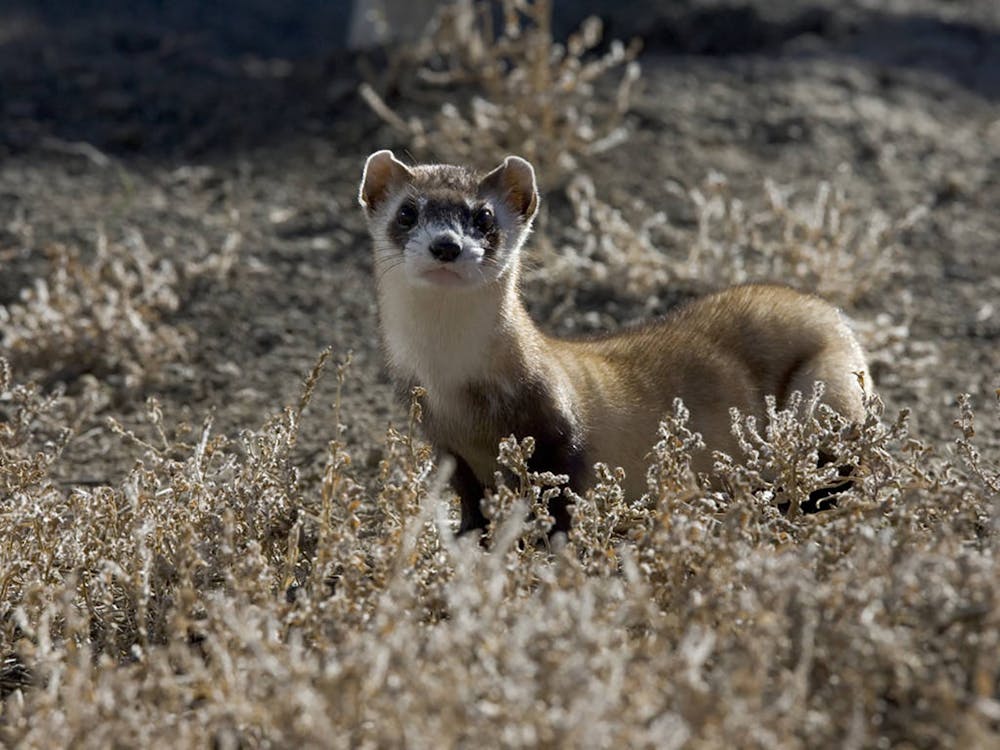On Nov. 1, the U.S. Fish and Wildlife Service announced the first-ever birth of black-footed ferrets to a cloned parent — marking the first time a cloned U.S. endangered species has produced offspring.
The ferret babies — aka kits — named Red Cloud and Sibert were born to their cloned mother, Antonia, and their father, Urchin, earlier this year, according to Smithsonian Magazine.
Cloning refers to processes used to create an identical genetic copy of a biological entity, according to the National Human Genome Research Institute.
Black-footed ferrets were thought to be extinct until a small population was rediscovered in Meeteetse, Wyoming in the 1980s, according to Meeteetse Museums.
Of that population, seven ferrets were able to reproduce. The current population, aside from the clones and Antonia’s kits, is entirely descended from those seven ferrets, according to a USFWS press release.
Antonia is a clone of Willa, one of the original ferrets who was captured in Meeteetse as part of a conservation program that began in the 1980s. Unlike the seven founding ferrets, Willa did not reproduce in captivity, and the samples of her genetic material were collected in 1988, according to the USFWS press release.
Justin Chuven, the recovery program coordinator for the USFWS National Black-Footed Ferret Conservation Center, said this was a lucky situation. The biologists who collected the genetic material preserved it in a frozen zoo in San Diego at the time, he said.
“At that point, they didn't know what they were really collecting the material for other than in the hopes that at some point in the future, the technology would exist to actually do something like we have done now with that material,” Chuven said. “Incredible foresight there.”
Since Willa was not a founding ferret, Antonia’s kits provide a unique opportunity to introduce further genetic diversity into the black-footed ferret population, Chuven said. Increasing genetic diversity can make species more adaptable to changes, which is especially important for endangered species with small populations, according to NOAA Fisheries.
“Lots of endangered species get down to very low population numbers, and therefore you decrease the genetic diversity that's available,” Chuven said. “(Willa) has already passed away without contributing (her) genetic material to the population, so normally it's lost. But in this case, we're actually resurrecting genetic material to incorporate into the existing population.”
According to an April USFWS press release, these samples contain triple the amount of unique genetic variations than in the current population.
Making an endangered species more resilient is crucial to its survival, according to Monarch Watch.
Get content from The Daily Lobo delivered to your inbox
Conserving the ferret population doesn’t just help the ferrets, Chuven said.
“You are conserving and protecting the prairie habitat,” Chuven said. “Which is not only conserving and protecting the black-footed ferret — it’s also all of the other species that occupy that habitat.”
The birth of Red Cloud and Sibert marks the successful introduction of Willa’s genetic material to the population, thus making Willa the eighth founding ferret — more than 40 years after the species was rediscovered.
Arly Garcia is a beat reporter for the Daily Lobo. She can be reached at news@dailylobo.com or on X @dailylobo






